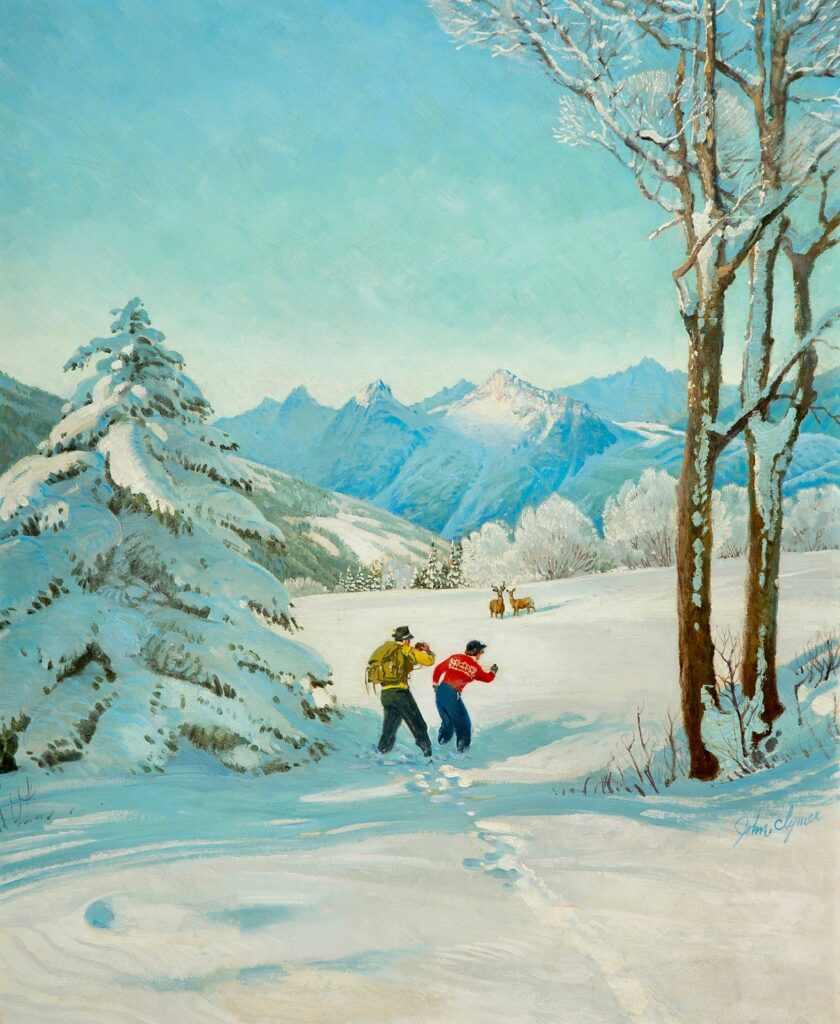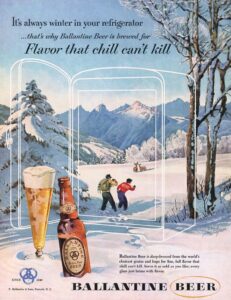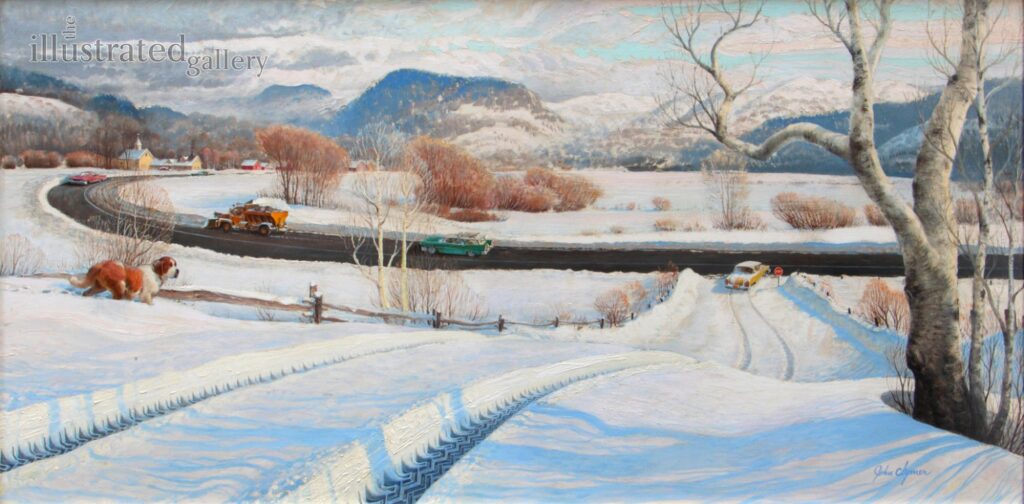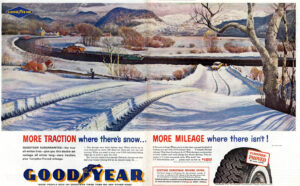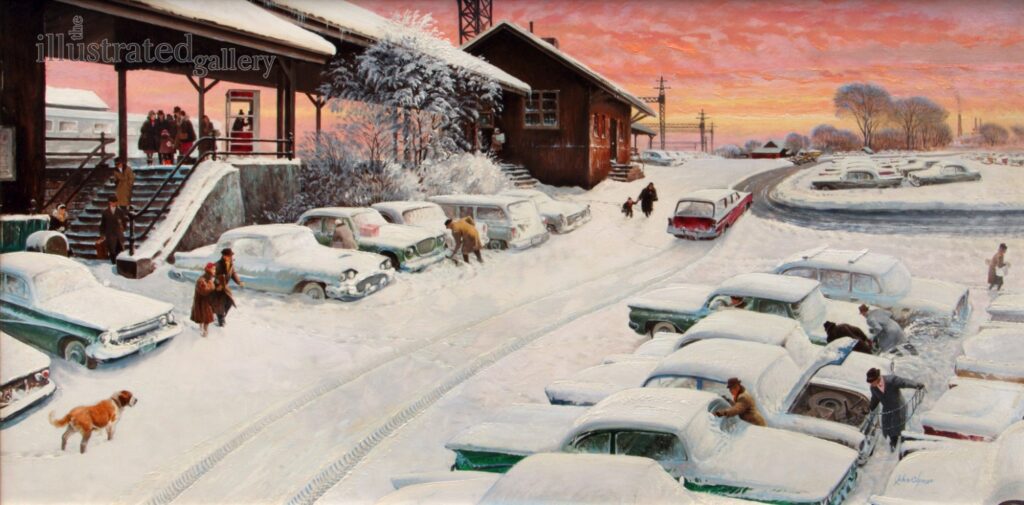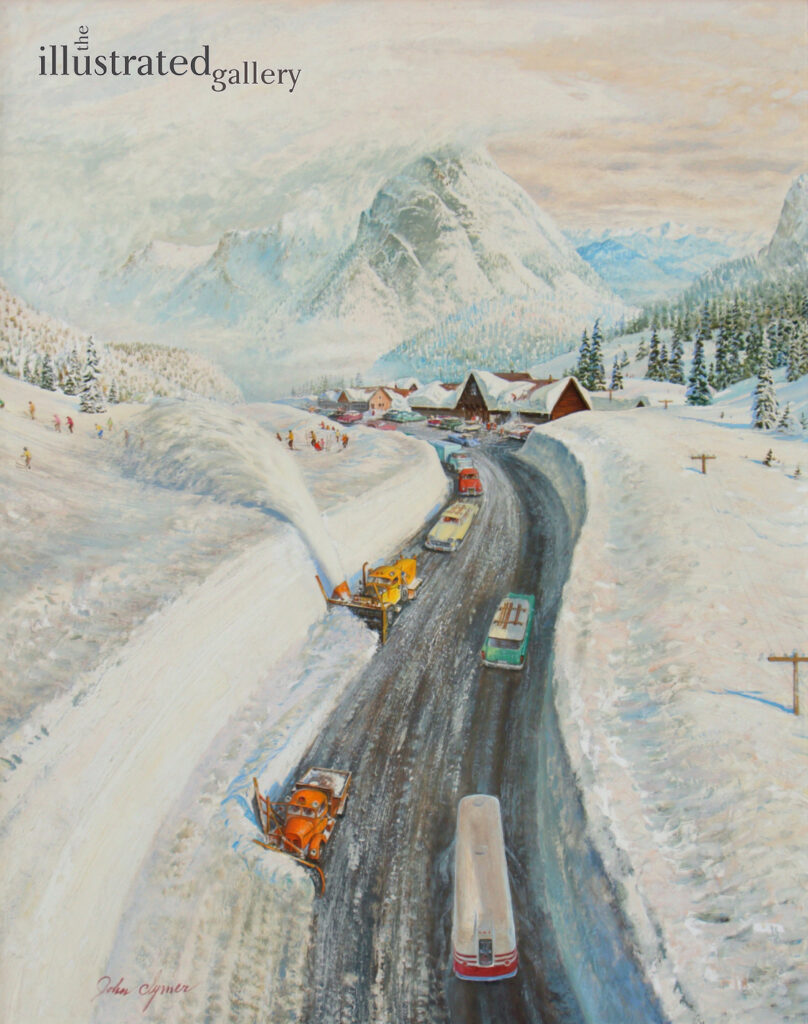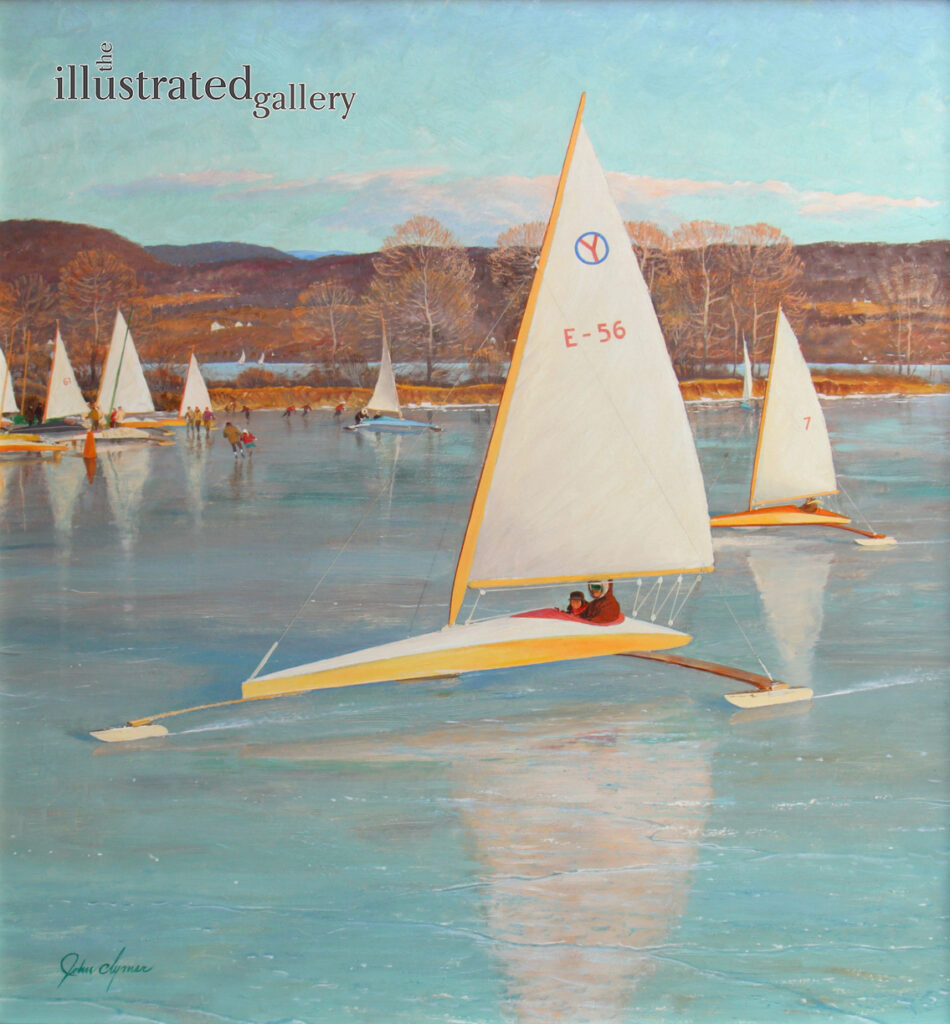John Ford Clymer masterfully captured the essence and character of the winter season. His scenes created for advertisements and magazine covers evoke invigorating cold air, crisp with the promise of more snow, and depict frosted landscapes with the long shadows of trees stretched beneath cool blue and steely gray skies.
John Ford Clymer. When Couples Meet. Original advertisement for Ballentine Beer, 1953
The wintry setting of Clymer’s 1953 advertisement for Ballantine Beer is well-suited to the product’s messaging. With the tagline “Flavor that chill can’t kill,” the published ad plays up the enticing coldness with an outline of an open refrigerator superimposed on the landscape alongside a frosty glass and bottle of beer perched in the snowy foreground. Having served its initial commercial purpose, the painting now stands on its own as a charming scene of a couple encountering two deer who, startled, gaze at the pair with equal interest. Clymer leads the viewer into the scene through the trail of footsteps left by the couple, passing by two small indentations in the snow created to accommodate the chilled beer glass and bottle, with whose removal now reads as small snow drifts.
John Ford Clymer. Winter in the Country. Original advertisement for Goodyear Tire and Rubber Company, published 1961
Clymer’s advertisements for Goodyear Tire & Rubber Company in the early 1960s also rely on the winter landscape to sell a product. Using a similar technique of drawing the viewer into the landscape through a diagonal trail left through the snow, here Clymer capitalizes on illustrating the consumer benefit rather than the product itself. In a rural scene, a car has safely navigated to the bottom of a gently winding hill, leaving behind clear and crisp outlines of tire treads in the deep snow. As with most successful advertising, one doesn’t need to read the tagline to understand the intended message – “More traction when there’s snow…more mileage when there isn’t!” Another Goodyear ad in the series showing a commuter rail station in Bridgewater, Connecticut communicates the same message, showing that reliable traction isn’t just a requirement for rural roads.
John Ford Clymer. Route 1, Bridgewater, Connecticut. Original advertisement for Goodyear Tire and Rubber Company, published 1961
For the February 6, 1960 cover of The Saturday Evening Post, Clymer once again takes winter driving as his subject, this time highlighting the work of road crews plowing a highway clear for skiers driving up to the summit of Washington state’s Snoqualimie Pass to the peaks of the Cascade Range. So deep is the snow that it dwarfs the cars and nearly buries the telephone poles and trees running alongside the highway. In the distance, intrepid workers shovel snow off the roof of the ski lodge to prevent it from collapse.
Clymer’s Post cover published a few months before on November 28, 1959, shows a much more idyllic scene of winter leisure. Here, ice boats and skaters glide across the glassy surface of Lake Warren, Connecticut, rendered in cool blues and lavenders. The warm smiles of the adult and child in the foreground lend additional delight to the scene.
John Ford Clymer showed talent from a young age, having sold two advertisements to the Colt Firearms Company by the age of sixteen. Raised in Ellensburg, Washington and moving to Vancouver, Canada after high school, the landscape of the Pacific Northwest would continue to inspire Clymer’s work throughout his life. Clymer spent several years in Canada, illustrating for Canadian magazines and advertising firms by day and taking art school classes at night. During this time he traveled throughout Canada, immersing himself in the landscape, wildlife, and culture of the Northwest region. In 1930, Clymer moved to Wilmington, Delaware to study commercial art at the Wilmington Academy of Art, where the artist was strongly influenced by N.C. Wyeth and his students. Clymer moved his family to Westport, Connecticut in 1937 to join the artist colony where he furthered his studies under Harvey Dunn.
Clymer developed a fruitful career on the east coast, maintaining a steady roster of advertising clients, including the New England Life Insurance Company, as well as illustrating for leading magazines of the day, such as The Saturday Evening Post, for which he would create more than 80 covers between 1942 and 1962. Clymer and his wife Doris eventually moved to Jackson Hole, Wyoming in 1966, where he would spend the rest of his life focusing his work on scenes of the American West.
Click here to view all available works by John Ford Clymer
